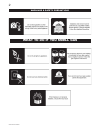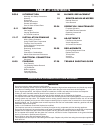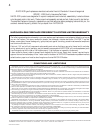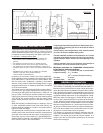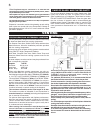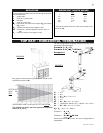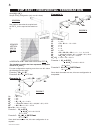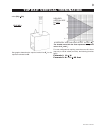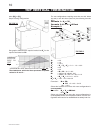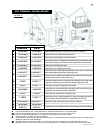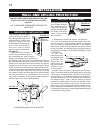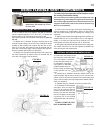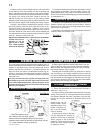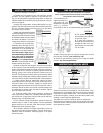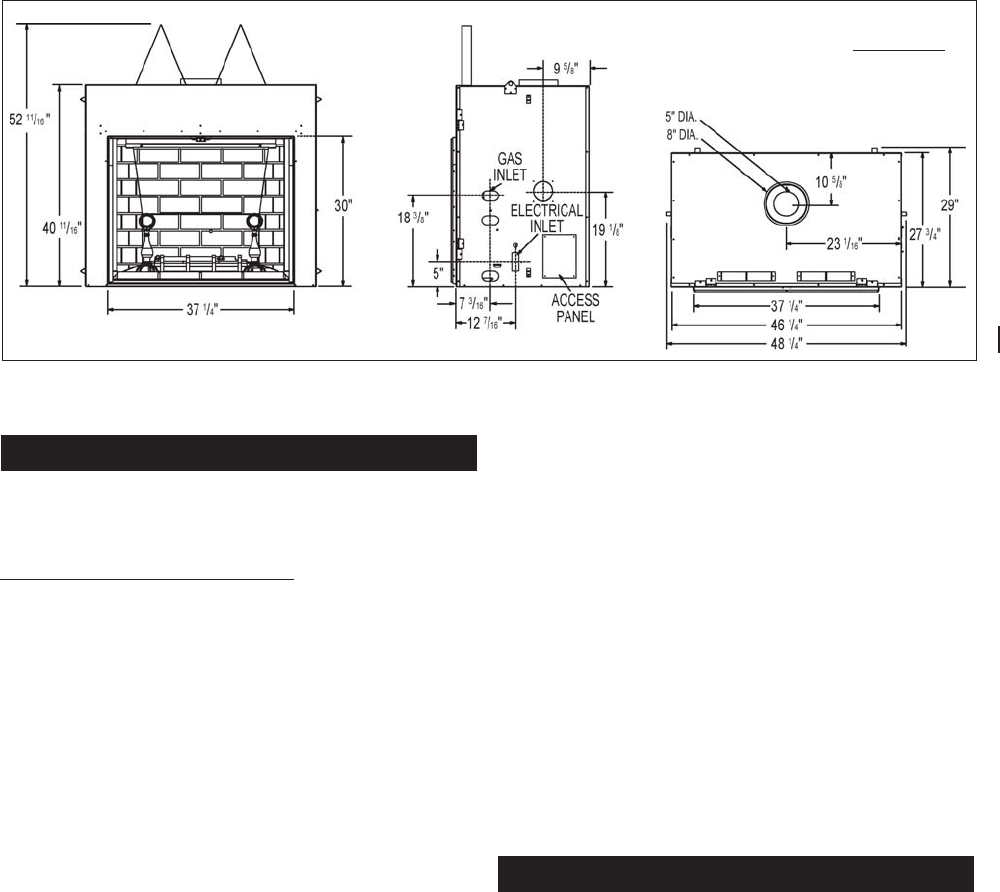
5
W415-0447 / B / 05.24.05
Purge all gas lines with the glass door of the fireplace open.
Assure that a continuous gas flow is at the burner before
closing the door.
Under extreme vent configurations, allow several minutes
(5-15) for the flame to stabilize after ignition.
Provide adequate ventilation and combustion air. Provide
adequate accessibility clearance for servicing and operat-
ing the fireplace. Never obstruct the front opening of the
fireplace.
Objects placed in front of the fireplace must be kept a
minimum of 48" from the front face of the unit.
Minimum clearance to combustible construction
from fireplace and vent surfaces:
fireplace framing - 0" to stand-offs (top, rear and sides)
fireplace finishing - 5
3
/
8
" to sides,
23
3
/
8
" to top of fireplace opening.
vent pipe - 2 inches
recessed depth - 29 inches
FOR YOUR SATISFACTION, THIS FIREPLACE HAS BEEN
TEST-FIRED TO ASSURE ITS OPERATION AND QUALITY!
Maximum input is 43,000 BTU/hr for both natural gas and pro-
pane. When the fireplace is installed at elevations above 4,500ft,
and in the absense of specific recommendations from the local
authority having jurisdiction, the certified high altitude input rat-
ing shall be reduced at the rate of 4% for each additional 1,000ft.
Maximum output for natural gas is 33,540 BTU/hr at an effi-
ciency of 78%; and 34,000 BTU/hr for propane at an efficiency
of 79%. Minimum inlet gas supply pressure is 4.5 inches water
column for natural gas and 11 inches water column for propane.
Maximum inlet gas pressure is 7 inches water column for natu-
ral gas and 13 inches water column for propane. Manifold pres-
sure under flow conditions is 3.5 inches water column for natu-
ral gas and 10 inches water column for propane.
This fireplace is approved for bathroom, bedroom and bed-
sitting room installations and is suitable for mobile home in-
stallation. The natural gas model can only be installed in a
mobile home that is permanently positioned on its site and
fueled with natural gas.
FIGURE 1
THIS GAS FIREPLACE SHOULD BE INSTALLED AND SER-
VICED BY A QUALIFIED INSTALLER to conform with local
codes. Installation practices vary from region to region and it
is important to know the specifics that apply to your area,
for example: in Massachusetts State:
• The fireplace damper must be removed or welded in the
open position prior to installation of a fireplace insert or
gas log.
• The appliance off valve must be a “T” handle gas cock.
• The flexible connector must not be longer than 36 inches.
• The appliance is not approved for installation in a bedroom or
bathroom unless the unit is a direct vent sealed combustion prod
uct.
• WARNING: This product must be installed by a licensed
plumber or gas fitter when installed within the
commonwealth of Massachusetts.
In absence of local codes, install to the current CAN/CGA -
B149 Installation Code in Canada or to the National Fuel Gas
Code, ANSI Z223.1, and NFPA 54 in the United States. Suit-
able for mobile home installation if installed in accordance
with the current standard CAN/CSA Z240MH Series, for gas
equipped mobile homes, in Canada or ANSI Z223.1 and NFPA
54 in the United States.
The fireplace and its individual shutoff valve must be discon-
nected from the gas supply piping system during any pres-
sure testing of that system at test pressures in excess of 1/2
psig (3.5 kPa). The fireplace must be isolated from the gas
supply piping system by closing its individual manual shutoff
valve during any pressure testing of the gas supply piping
system at test pressures equal to or less than 1/2 psig (3.5
kPa).
When the fireplace is installed directly on carpeting, vinyl tile
or other combustible material other than wood flooring, the
fireplace shall be installed on a metal or wood panel extend-
ing the full width and depth.
The optional heat circulating blower is supplied with a cord. If
installed, the junction box must be electrically connected and
grounded in accordance with local codes. In the absence of
local codes, use the current CSA C22.1 CANADIAN ELEC-
TRICAL CODE in Canada or the ANSI/NFPA 70 NATIONAL
ELECTRICAL CODE in the United States.
GENERAL INSTRUCTIONS
GENERAL INFORMATION




